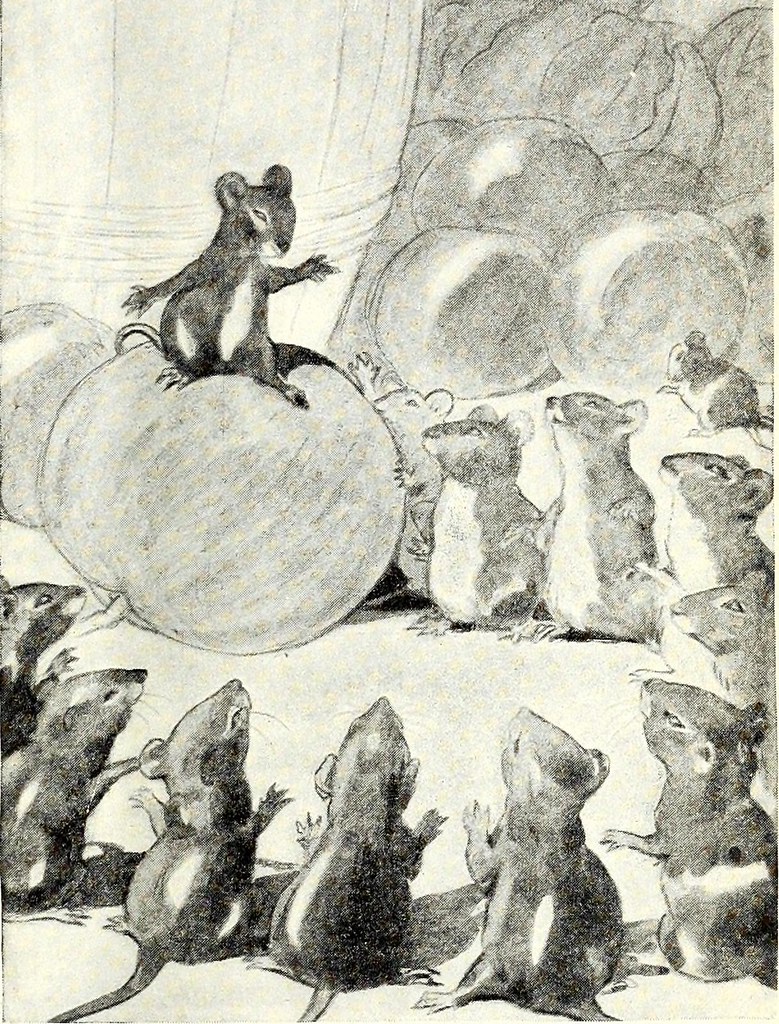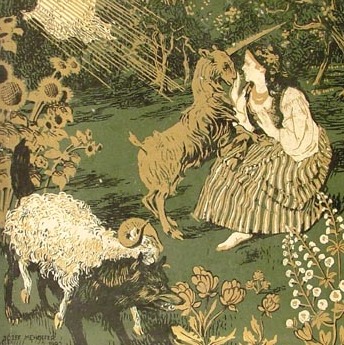Fables
(Fables, Greek, c. 550 BCE)
Introduction
"Aesop's Fables" (Lat: "Aesopica") refers to a collection of well-known fables credited to Aesop, a slave and story-teller who lived in ancient Greece in the 6th Century BCE. It is also sometimes used as a blanket term for any collections of short fables (i.e. any brief story used to illustrate a moral lesson), especially beast fables involving anthropomorphic animals. They have been popular throughout history, and remain a popular choice for moral education of children even today.
Synopsis
There are many different collections of fables described as "Aesop's Fables", some numbering up to 600, but among the best known are:
Aesop's Fables List
Androcles and the Lion
(Moral: Gratitude is the sign of noble souls)The Ant and the Grasshopper
(Moral: It is best to prepare for the days of necessity)The Bear and the Two Travellers
(Moral: Misfortune tests the sincerity of friends)The Boy Who Cried Wolf
(Moral: A liar will not be believed, even when he speaks the truth)The Cat and the Mice
(Moral: He who is once deceived is doubly cautious)The Cock and the Pearl
(Moral: Precious things are for those that can prize them)The Crow and the Pitcher
(Moral: Little by little does the trick, or Necessity is the mother of invention)The Dog and the Bone
(Moral: By being greedy, one risks what one already has)The Dog and the Wolf
(Moral: It is better to starve free than to be a well-fed slave)The Dog in the Manger
(Moral: People often begrudge others what they cannot enjoy themselves)The Farmer and the Snake
(Moral: The greatest kindness will not bind the ungrateful)The Farmer and the Stork (Moral: You are judged by the company you keep)
The Fisher
(Moral: When you are in a man's power you must do as he bids you)The Fox and the Crow
(Moral: Do not trust flatterers)The Fox and the Goat
(Moral: Never trust the advice of someone in difficulties)The Fox and the Grapes
(Moral: It is easy to despise what you cannot get)The Frog and the Ox
(Moral: Not all creatures can become as great as they think)The Frogs and the Well
(Moral: Look before you leap)The Frogs Who Wanted a King
(Moral: Better no rule at all than a cruel rule)The Goose that Laid the Golden Eggs
(Moral: Those who want too much lose everything)The Hare and the Tortoise
(Moral: Slow and steady wins the race)The Lion and the Mouse
(Moral: No act of kindness, no matter how small, is ever wasted)The Lion's Share
(Moral: You may share the labours of the great, but you will not share the spoil)The Mice in Council
(Moral: It is easy to propose impossible remedies)The Mischievous Dog
(Moral: Notoriety is often mistaken for fame)The North Wind and the Sun
(Moral: Persuasion is better than force)The Town Mouse and the Country Mouse
(Moral: Better beans and bacon in peace than cakes and ale in fear)The Wolf in Sheep's Clothing
(Moral: Appearances can be deceptive)
Analysis
It is largely due to the claims of the 5th Century BCE Greek historian Herodotus that the "Fables" were attributed to Aesop, but Aesop's existence and his authorship of the fables was widely accepted thereafter. In fact, the "Fables" were probably merely compiled by Aesop from existing fables (for example, many of the fables attributed to him have since been found on Egyptian papyri known to date between 800 and 1,000 years before Aesop's time).
The 4th Century BCE Peripatetic philosopher Demetrius of Phaleron compiled "Aesop's Fables" into a set of ten books (since lost) for the use of orators, and even Socrates is reported to have whiled away his jail time turning some of them into verses. The first extensive translation of Aesop into Latin was done by Phaedrus, a freedman of Augustus, in the 1st Century CE.
The collection which has come down to us under the name of "Aesop's Fables" evolved from the late Greek version of Babrius (who turned them into choliambic verses at some uncertain time between the 3rd Century BCE and the 3rd Century CE), via subsequent translations in the 9th Century CE by Ignatius Diaconus (who also added some stories from the Sanskrit "Panchatantra"), and then the definitive complation by the 14th Century monk, Maximus Planudes.
Many phrases and idioms in everyday use (such as "sour grapes", "crying wolf", "the lion's share", "dog in a manger", "a wolf in sheep's clothing", "killing the golden goose", "cakes and ale", etc) have their origins in "Aesop's Fables".
Resources
Collection of fables compilated from different sources as well as some background information:
https://fablesofaesop.com/Modern 2002 English translation by Laura Gibbs of over 600 fables (Aesopica)
Babrius' Greek original, as well as links to many other translations in Greek, Latin and English (Aesopica)



